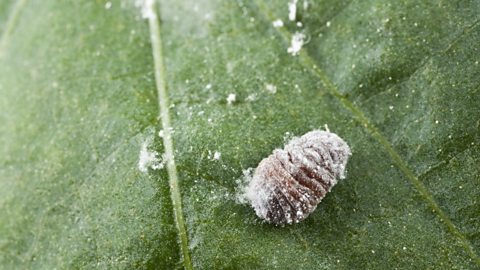Identification of pathogens - Higher
Scientists want to identify potential plant pathogenMicroorganism that causes disease. as quickly as possible to reduce the likelihood of an infection spreading. The process to identify a disease may include the following steps:
- Following a report of a possible infection, scientists will visit the location.
- To avoid any confusion it is essential they look at other factors that might cause similar symptoms. For example, damage to leaves might be caused by a pathogen or grazing animals.
- The scientists will try to identify any environmental causes such as pollution that might be affecting the plants.
- Finally they will photograph the symptoms and take samples for laboratory analysis.
Once an infection has been identified, scientists will look for any patterns in the distribution of infected plants. Do they all appear downwind of the first infection? Are future cases reported along the banks of rivers and streams?
Symptoms of plant disease
Plant pathogens cause diseases with a range of different symptoms. These symptoms can be used to identify the pathogen and then treat the disease, or limit its effects.
Pests can also cause damage to plants. Examples are the insects, aphids and mealybugs. Although these do not cause disease, as pathogens do, they can weaken and damage the plant. It is important to identify which pests are causing symptoms, as well as identifying which pathogen is causing a disease, so that the correct treatment can be decided.
The symptoms of common plant infections are show below.

Image caption, Stunted growth from mealybugs
Mealybugs can cause dehydrated plants which are likely to have stunted growth
Image caption, Spots on leaves caused by the rose black spot fungus
Rose black spot fungus causes black and purple spots on leaves
Image caption, Decay caused by the rice blast fungus
The rice blast fungus causes stems to decay
Image caption, Malformed stems or leaves caused by the ash dieback fungus
Ash dieback fungus causes malformed stems and leaves
Image caption, Discoloration caused by the tobacco mosaic virus
The tobacco mosaic virus causes discolour leaves
Image caption, The presence of pests (aphids)
Aphid insects suck sap from a nettle
1 of 6
Identification
Farmers and gardeners often use books like gardening manuals and the internet to identify plant diseases. They do this by comparing the symptoms of their plants with images of other infected ones. Gardeners can also take a small cutting of an infected plant (or a photograph of it) to a local garden centre. Here staff can help identify the disease by looking at its symptoms. Gardeners can then buy suitable treatments from the garden centre to treat the disease.